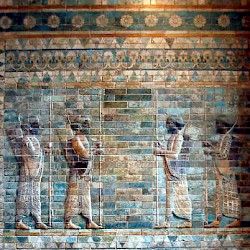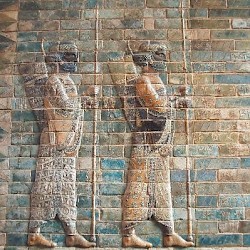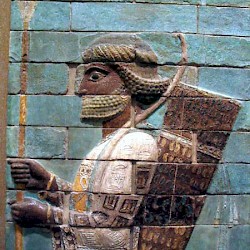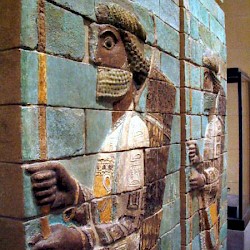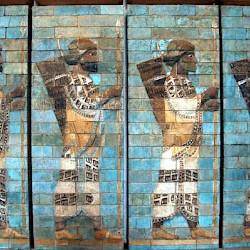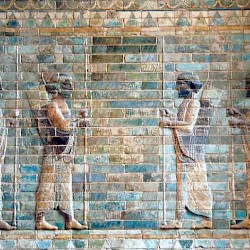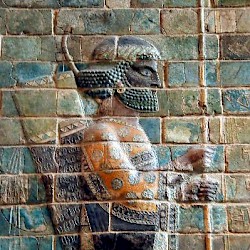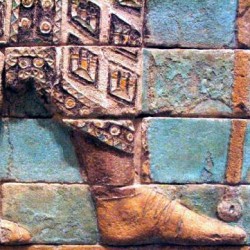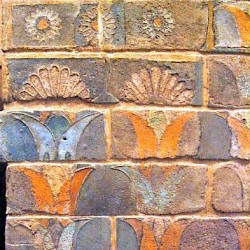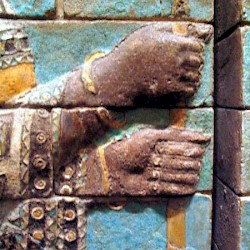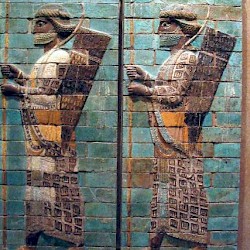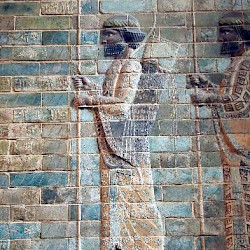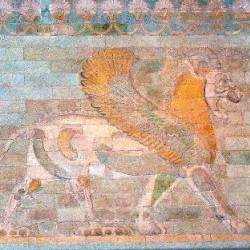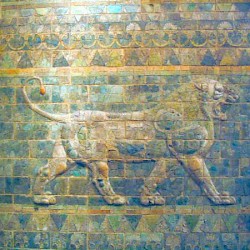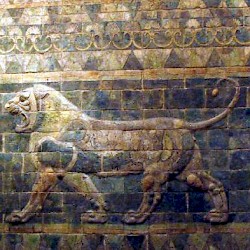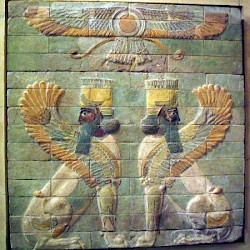Susa, Soldiers' Mosaic
Susa (Elamitic, Babylonian: Šušim; Greek τὰ Σοῦσα): capital of Elam, favorite residence of the Persian king Darius I the Great.
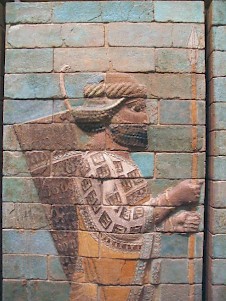
The palaces of the Achaemenid kings were often decorated with representations of long lines of courtiers and soldiers, dressed for a festive occasion: although they carry arms, they have no shields or helmets. The soldiers are often called "Immortals" or "Apple Bearers", although "Companions" appears to have been their real name (more...). In Persepolis, they are carefully sculpted out of stone. In Susa, the soldiers were made from glazed brick, which gives us an idea of the colors.
Other reliefs show lions (comparable to those from Babylon) and mythological creatures like sphinxes and winged lions. They are also very common and can be found in the form of both sculpture and glazed brocks
When Susa was excavated at the end of the nineteenth century, the French archaeologists had a deal with the government that every object made of gold and silver was to remain in Iran (or Persia, as it was called in those days). As a consequence, the colorful reliefs are now in the Louvre in Paris, where they are illuminated by yellowish light, making it difficult to make good photos. The inscription is probably DSm.
